Interesting Facts About Victory In Europe Day (VE DAY)
“The western world has been freed of the evil forces which for five years and longer have imprisoned the bodies and broken the lives of millions upon millions of freeborn men. They have violated their churches, destroyed their homes, corrupted their children and murdered their loved ones. Our armies of liberation have restored freedom to those suffering peoples, whose spirit and will the oppressor could never enslave.”
– President Harry S. Truman, V-E Day Proclamation
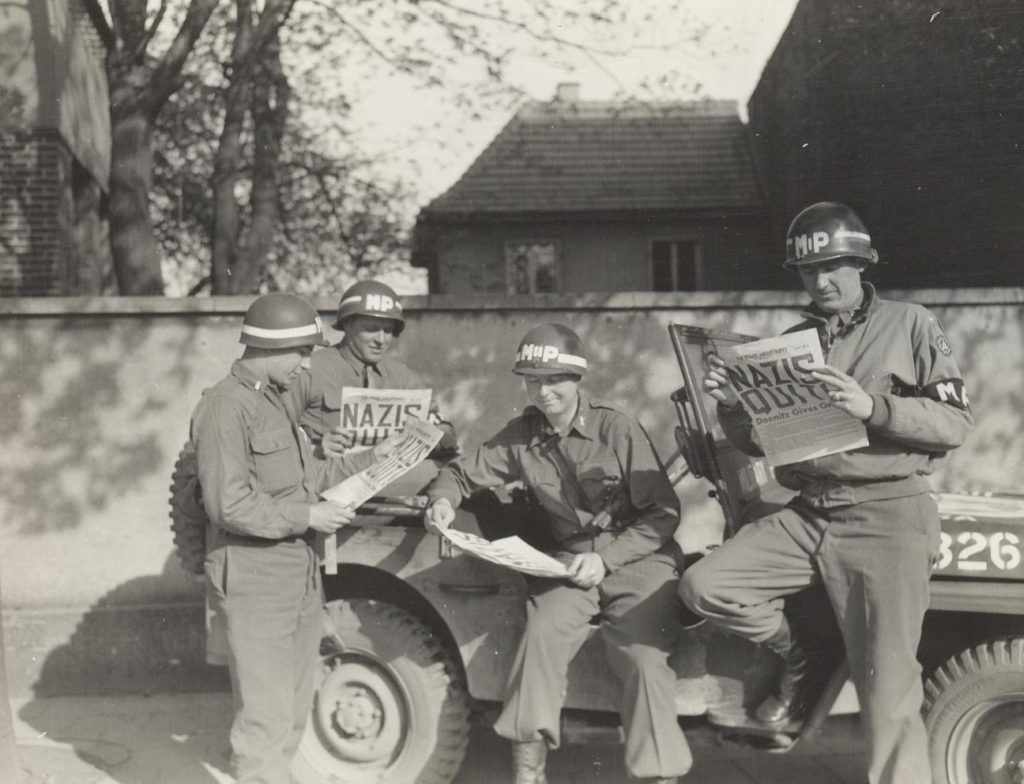
On May 8th, 1945 – known as Victory in Europe Day or V-E Day – celebrations erupted around the world to mark the end of a nearly six year war that had cost the lives of millions; destroyed homes, families, and cities; and brought huge suffering to the populations of entire countries.
Millions of people rejoiced in the news that Germany had surrendered, relieved that the intense strain of the war was finally over. In towns and cities across the world, people marked the victory with street parties, dancing and singing.
Here’s what you need to know about VE Day and how it was celebrated in the U.S.
There Were Two Surrender Signings
The first was on May 7, 1945, when German Col. Gen. Alfred Jodl signed Germany’s surrender on all fronts in Reims, France.
Adolf Hitler committed suicide on April 30th, 1945 after Berlin was surrounded by Allied forces. His named successor was Grand Admiral Karl Dönitz. During his brief spell as Germany’s president, Dönitz negotiated an end to the war with the Allies, and tried to save as many Germans as possible from falling into Soviet hands.
A German delegation arrived at the headquarters of British Field Marshal Bernard Montgomery at Lüneburg Heath, east of Hamburg, on May 4th. There, Montgomery accepted the unconditional surrender of German forces in the Netherlands, northwest Germany and Denmark. On May 7th, at his headquarters in Reims, France, Supreme Allied Commander General Eisenhower accepted the unconditional surrender of all German forces. The document of surrender was signed on behalf of Germany by General Alfred Jodl and came into effect the following day.
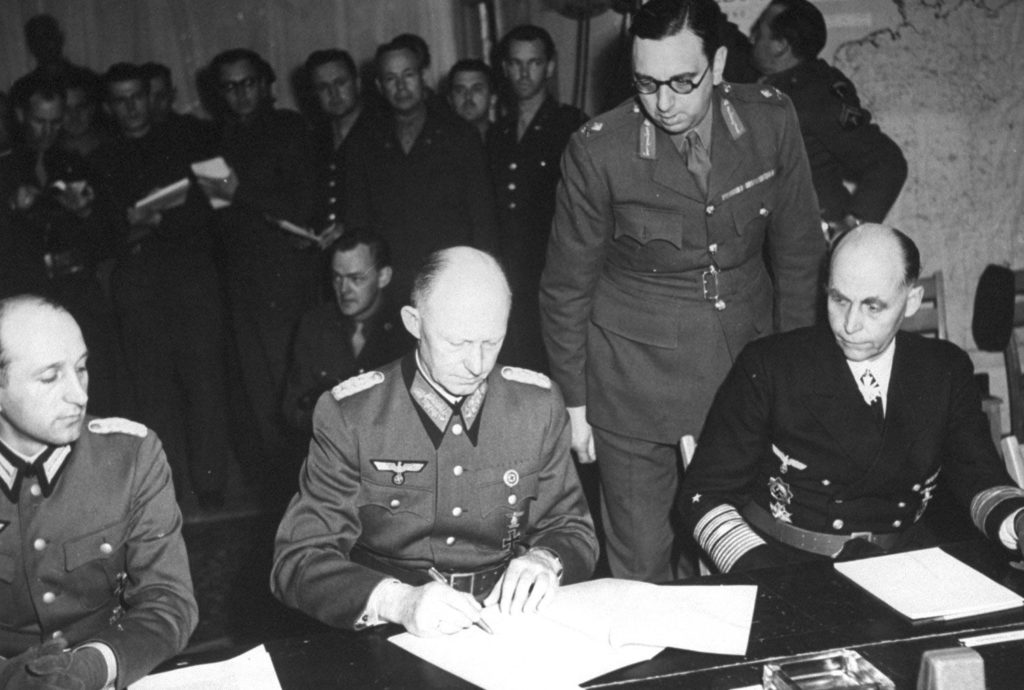
The second signing – insisted upon by Soviet Premier Josef Stalin – was by German Field Marshal Wilhelm Keitel the next day in Berlin. Dönitz’s plan was partially successful and millions of German soldiers surrendered to Allied forces, thereby escaping Soviet capture.
Jodl and Keitel were later found guilty of war crimes by the International Military Tribunal in Nuremberg, Germany, and both were subsequently executed.
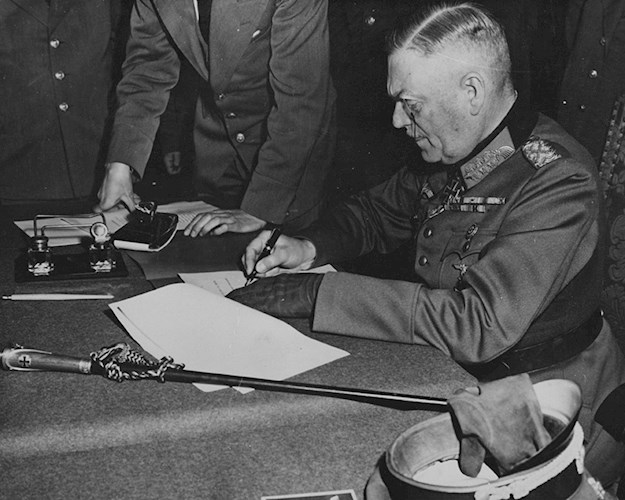
How VE Day Was Celebrated In the U.S.
In the U.S., the victory was dampened by the recent death of President Roosevelt. His successor, Harry S. Truman, dedicated the day to Roosevelt and ordered that flags be kept at half-staff. Additionally, the war was not won yet in the Pacific, where U.S. and Allied forces fought the Japanese in Okinawa, the Philippines and other places. President Truman urged Americans to temper their elation until all hostilities ended. Despite this, many Americans rejoiced.
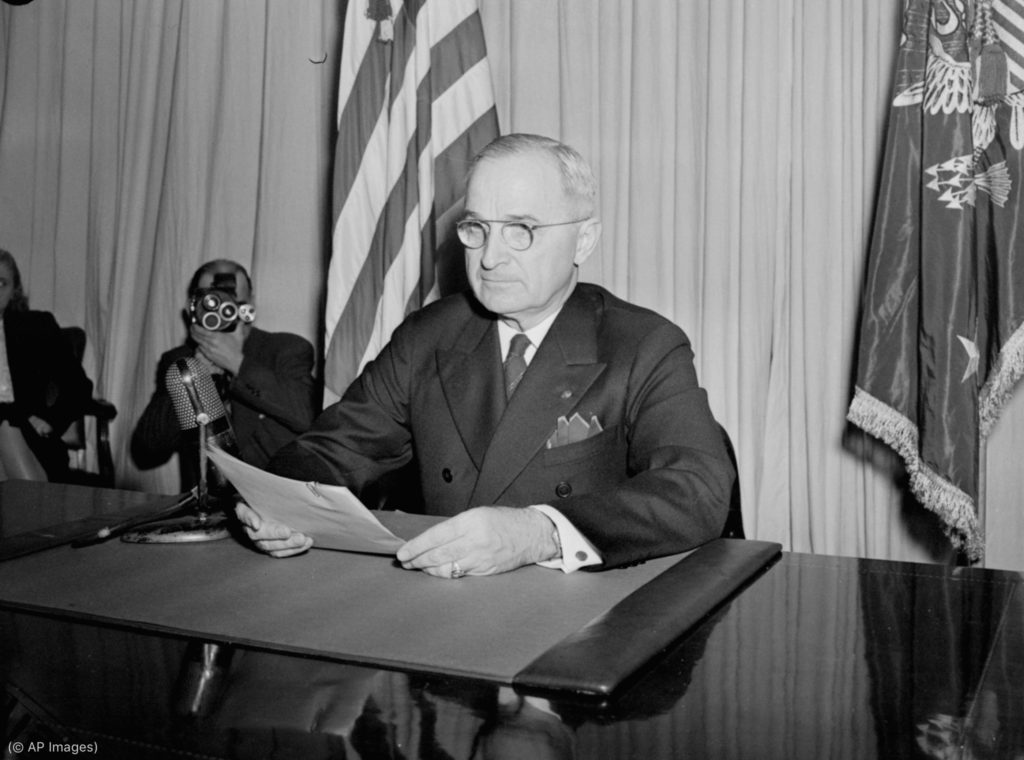
New York was the site of the largest V-E Day celebration within the United States. Crowds gathered in Times Square, and thousands marched down Fifth Avenue with confetti raining down on them.
Even before the official declaration of victory, New York officials knew what was coming, and they were prepared. A few days before the anticipated announcement of V-E Day, the New York Times told its readers that 15,293 police officers would be on duty “to ensure that celebrants are held within the bonds of sane and reasonable hilarity.”
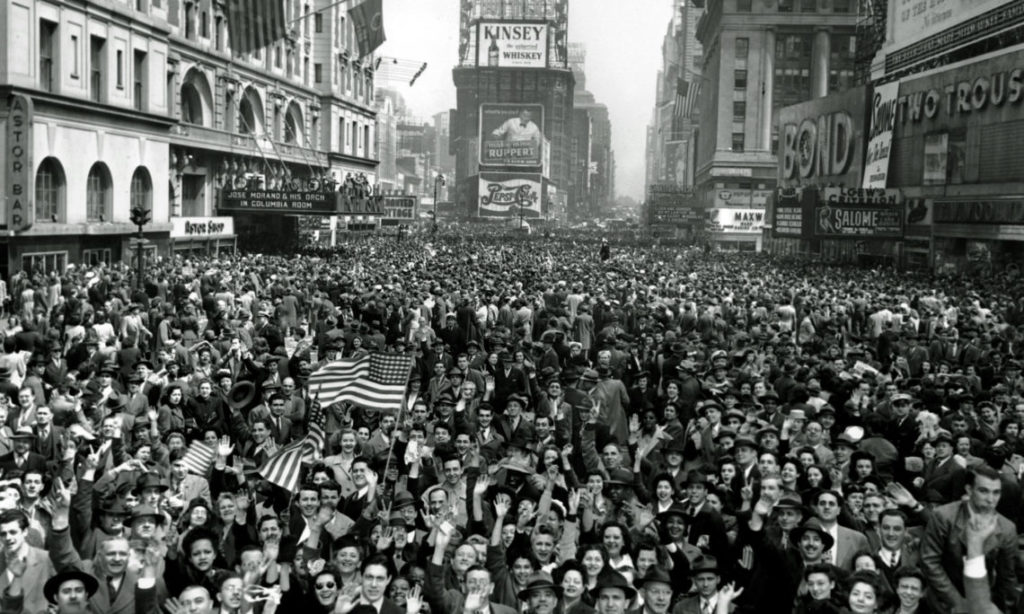
Some U.S. cities observed V-E Day in a subdued fashion, adhering to Truman’s advice. From coast to coast, Americans flocked to houses of worship to pray. In Chicago, churches arranged special services, reported the Chicago Daily Tribune. Government and labor leaders asked workers to stay on their jobs, and liquor stores were closed for 24 hours. New Orleans “had no frenzied celebration,” and a similar calm prevailed in Dallas, Boston and Denver, according to Newsweek. The mood in Atlanta was “somber, reflective,” while in Los Angeles, the mayor proclaimed: “This is not a holiday.”
On this special anniversary, the ASOM recognizes with gratitude the sacrifices made over 76 years ago in the European Theater of Operations.
Victory in Europe Day will always be remembered.
To learn more about World War II, and the role Airborne forces played in it, click here!



